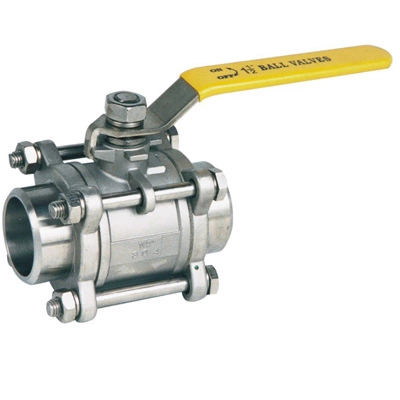Cautions for filling grease to valves
There are two problems may occur if the amount of grease is neglected when injecting. One is that the amount of grease is less than the required amount, and the abrasion of sealing surface is accelerated due to lack of lubricant. The other is wastefully injecting too much grease, without an accurate calculation depending on different sizes, types and volumes of different kinds of valves.
Pressure variation is easy to neglect when injecting grease. During the operation, the pressure brought by injecting changes regularly from the peak to the bottom. Leakage or seal failure will happen if the pressure is too low, whereas if the pressure is too high, the opening will be blocked, and the grease in the sealing may harden, or the sealing ring may lock with the valve ball, valve plate. In low pressure situation, most of the grease will flow into the bottom of the valve cavity (usually in small gate valves). For high pressure situation, check the nozzle of the grease gun, replace it if the hole is blocked. If the grease is hardened, use cleaning fluid to repeatedly soften the failed sealing grease and inject new grease. Besides, the sealing type and material also affect the grease filling pressure. Different sealing forms have different grease filling pressures. Generally, the pressure of hard sealing is higher than that of soft sealing.
When injecting the valve, pay attention to the switch position of the valve. Ball valve is generally in the open position during maintenance, except in special circumstances it needs to turn off. Gate valves must be closed during maintenance to ensure that the grease fills the seal groove along the sealing ring. If it is open, the seal grease will fall directly into the flow channel or valve cavity.
For checking the effect of grease, sometimes you may need to open or close the valve, even the pressure, the amount of grease and the switch position are without problem.
Make sure to discharge the impurities in the valve body and release the pressure of the pipe plug before injecting. Because after the valve pressure test, the pressure of the gas and water in the sealed valve chamber increase as the temperature increases. Timely discharge the pressure in the valve body also ensures the safety. And after injecting, be sure to tighten the plug to prevent accidents.
The diameter of the valve should be flush with the seal ring holder. For instance, if the position of a ball valve is with an interference, then adjust it until the diameter is parallel and level. The adjusting process should be considered as a whole. If the opening position is flush but the close position is not, the valve will not be closed tight.
Make sure that the grease injection port is sealed or covered with lipid oxide so that no impurities will enter. In addition, paint anti-rust grease in order to prevent rusting.
It is also necessary to consider specific issues in the future oil delivery. In view of the different qualities of diesel and gasoline. For gasoline, timely replenish the grease to prevent wear.

Pressure variation is easy to neglect when injecting grease. During the operation, the pressure brought by injecting changes regularly from the peak to the bottom. Leakage or seal failure will happen if the pressure is too low, whereas if the pressure is too high, the opening will be blocked, and the grease in the sealing may harden, or the sealing ring may lock with the valve ball, valve plate. In low pressure situation, most of the grease will flow into the bottom of the valve cavity (usually in small gate valves). For high pressure situation, check the nozzle of the grease gun, replace it if the hole is blocked. If the grease is hardened, use cleaning fluid to repeatedly soften the failed sealing grease and inject new grease. Besides, the sealing type and material also affect the grease filling pressure. Different sealing forms have different grease filling pressures. Generally, the pressure of hard sealing is higher than that of soft sealing.
When injecting the valve, pay attention to the switch position of the valve. Ball valve is generally in the open position during maintenance, except in special circumstances it needs to turn off. Gate valves must be closed during maintenance to ensure that the grease fills the seal groove along the sealing ring. If it is open, the seal grease will fall directly into the flow channel or valve cavity.
For checking the effect of grease, sometimes you may need to open or close the valve, even the pressure, the amount of grease and the switch position are without problem.
Make sure to discharge the impurities in the valve body and release the pressure of the pipe plug before injecting. Because after the valve pressure test, the pressure of the gas and water in the sealed valve chamber increase as the temperature increases. Timely discharge the pressure in the valve body also ensures the safety. And after injecting, be sure to tighten the plug to prevent accidents.
The diameter of the valve should be flush with the seal ring holder. For instance, if the position of a ball valve is with an interference, then adjust it until the diameter is parallel and level. The adjusting process should be considered as a whole. If the opening position is flush but the close position is not, the valve will not be closed tight.
Make sure that the grease injection port is sealed or covered with lipid oxide so that no impurities will enter. In addition, paint anti-rust grease in order to prevent rusting.
It is also necessary to consider specific issues in the future oil delivery. In view of the different qualities of diesel and gasoline. For gasoline, timely replenish the grease to prevent wear.


